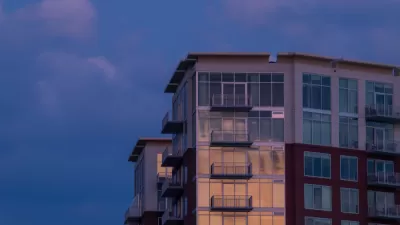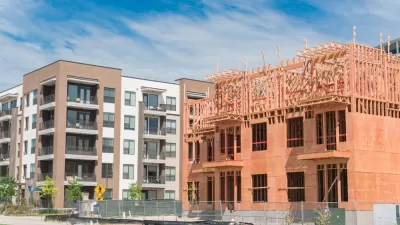Rent control is a political non-starter in the Lone Star State, but as rental prices continue to increase dramatically, advocates are looking for solutions.

An article by Timia Cobb for the Texas Tribune report on the consequences of quickly rising housing prices in Texas:
Across the state and country, a combination of social, economic and political forces are driving more people to look for rental housing but limiting the construction of units. That imbalance between supply and demand pushes rents upward, putting tenants in financial binds. And in Texas — where laws favor landlords, and rent control is virtually nonexistent — tenants are left to either take on additional jobs, cut other household costs or move out of the communities they prefer.
Cobb shares data from Apartment List, published at the end of January 2022, that shows the estimated median rent of new leases in several Texas cities increasing by double digits since March 2020.
The article uses the state of the rental housing market in Texas to raise a conversation about rent control, which is a difficult proposition in the state. "Texas allows rent control only if a city’s governing body determines there’s a housing emergency caused by a disaster. Even then, the decision to enact such a policy must be approved by the governor," according to Cobb.
Cobb shares information about the organizations that have pressed for rent control during the pandemic in Texas, to no avail (Los Angeles implemented stricter rent controls during the pandemic, as an example of this approach). The article also gives space to both sides of the debate about whether rent control is an effective tool for affordable housing in the long term. Ian Mattingly, president of the Apartment Association of Greater Dallas, presents the case, common among economists and landlords, that rent control will lead to fewer apartments being built. The discussion about rent control's effects on supply and demand also gives way to a conversation about the restrictions of zoning in many Texas cities.
FULL STORY: Texas tenants hit with soaring rent increases see little relief in sight

Planetizen Federal Action Tracker
A weekly monitor of how Trump’s orders and actions are impacting planners and planning in America.

Maui's Vacation Rental Debate Turns Ugly
Verbal attacks, misinformation campaigns and fistfights plague a high-stakes debate to convert thousands of vacation rentals into long-term housing.

Restaurant Patios Were a Pandemic Win — Why Were They so Hard to Keep?
Social distancing requirements and changes in travel patterns prompted cities to pilot new uses for street and sidewalk space. Then it got complicated.

In California Battle of Housing vs. Environment, Housing Just Won
A new state law significantly limits the power of CEQA, an environmental review law that served as a powerful tool for blocking new development.

Boulder Eliminates Parking Minimums Citywide
Officials estimate the cost of building a single underground parking space at up to $100,000.

Orange County, Florida Adopts Largest US “Sprawl Repair” Code
The ‘Orange Code’ seeks to rectify decades of sprawl-inducing, car-oriented development.
Urban Design for Planners 1: Software Tools
This six-course series explores essential urban design concepts using open source software and equips planners with the tools they need to participate fully in the urban design process.
Planning for Universal Design
Learn the tools for implementing Universal Design in planning regulations.
Heyer Gruel & Associates PA
JM Goldson LLC
Custer County Colorado
City of Camden Redevelopment Agency
City of Astoria
Transportation Research & Education Center (TREC) at Portland State University
Jefferson Parish Government
Camden Redevelopment Agency
City of Claremont





























